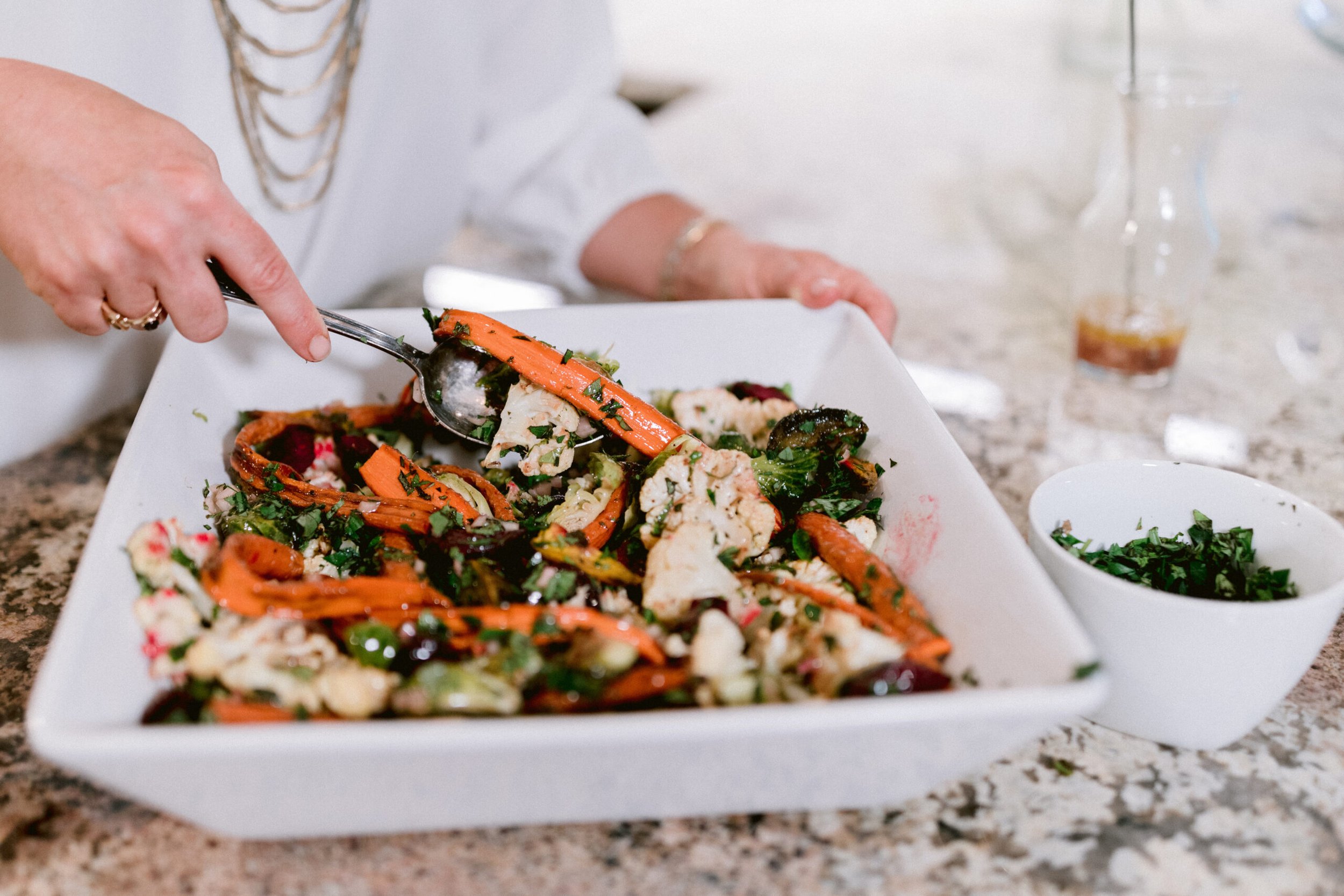How to Eat Garden-to-Table
Seasonal foods are more essential to our health and wellness than we realize. When you know how to eat garden-to-table, you pick up all those nutrients naturally! As we enter into new seasons we all have our favorite dishes we love. Personally, my favorites are anything cranberry and pumpkin in the fall.
Would you be surprised if I told you that your body craves foods that are in season?
Seasonal eating is rooted in our ancestry
Our ancestors did not have a choice to eat seasonally but they greatly benefited from this practice that optimizes energy and well-being.
I have an infamous watermelon obsession during the summer months. I’m first in line at the local farm stand on opening day in June and return religiously throughout the hot, humid summer. As the summer ends, the farm stand saves a few extra for me before closing up for the season.
However, this year fall arrived abruptly; as temps dropped, a sweet, crisp apple was the only thing on my mind. Those once-precious watermelons on my counter weren’t even tempting.
It’s truly remarkable how our bodies tell us what we need if we listen
Thanks to my time in an integrative nutrition program, I’ve gained a better understanding of the value of the diverse offerings provided by each season. The variety keeps us in sync with nature’s true rhythm. Instead of clinging to last season’s marginal produce, we have an opportunity to explore new colors and flavors.
Here are a few tips for how to eat garden-to-table:
As we enter the cooler seasons, think about the temperature and cooking methods of your foods. Add some heat by roasting, baking, or sautéing your veggies. Embrace the comforting ambience of a simmering stew. Our bodies crave warmth as we hunker down for winter.
Visit your local farmer's market. It is a terrific way to see what’s in season and what you can grow throughout the year. Chat with your local farmers and make note of what they plant and when they harvest. It’s a valuable learning opportunity for the aspiring gardener.
Favorite Garden-to-Table Recipes
This recipe was inspired by watching Salt, Acid, Fat, Heat on Netflix, based on Samin Norsat's book.
Roasted Garden Vegetable Medley
Cauliflower: Slice the cauliflower into pieces that are about ¼ inch think. The florets are beautiful in the dish. (you will have some random small pieces in the beginning as you make your way to the center)
Beets: Quarter the beets.
Brussels Sprouts: Chop into quarters.
Carrots: Slice in half lengthwise.
Roast a tray of each of the above vegetables at 400 degrees. Coat with olive oil and sprinkle with salt & pepper. Each vegetable has a different roasting time so check on them after 20 minutes. Depending on the size, you’re looking at 30-40 minutes of roasting time.
While the vegetables are roasting, assemble the dressing and chop the herbs.
Herb Vinaigrette Recipe
Finely chop a small shallot
½ - ¾ cup olive oil
½ - ¾ red wine vinegar
½ teaspoon garlic powder
Salt & Pepper to taste
Mix and set aside.
Tip: The vinegar ratio depends on your taste. I prefer equal parts.
Herbal Topping
Basil
Mint
Italian Parsley
Cilantro
You want 1-2 cups of chopped herbs to sprinkle over the veggies. Pick your favorites or try a mixture of all four. There were times we used whatever we had on-hand and the end result was always delicious.
Combine the roasted vegetables on a large serving dish. Pour the dressing over the vegetables and mix to coat equally. Mix and sprinkle the chopped herbs over the dressed veggies and enjoy!
Disclaimer: I don’t use exact measurements when I cook. Go with your gut and add what sounds good to you. Shall we say Intuitive cooking?
Nutritional Benefits of Roasted Veggies
Let’s chat about the nutritional bang for your buck you get with this dish. It is chock-full of phytonutrient foods with the brussels sprouts, cauliflower, carrots. The phytonutrients contain antioxidant and anti-inflammatory properties that support the immune system and the body's ability to clear out toxins. Eating the rainbow does pay off!
While herbs are known to have medicinal qualities, they’re often relegated to teas and tinctures. However, the Oglesby household has made a conscious effort to incorporate fresh herbs and all their nutritional benefits into our meals consistently. A quick example is Flat Leaf Parsley. I know... sounds uninspiring, but it’s an important staple in my garden and has oodles Vitamins A,C, and K. You can’t beat the health benefits and the flavor factor of fresh herbs.
Think you have a good idea how to eat garden-to-table? For more healthy recipe inspiration, follow me on Pinterest!



